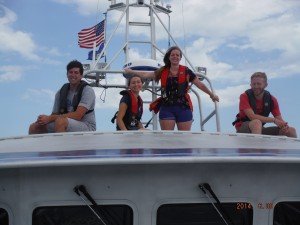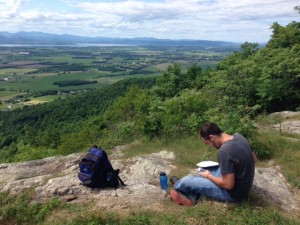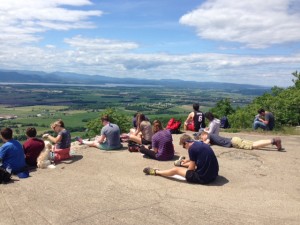One of the dominant narratives of the Lake Champlain basin is the story told by the geology and hydrology of the lake. This story is one that unfolded over a billion years of continental collision and crustal faulting, but especially over the last 15,000 years as the last glacial ice sheet retreated from the Vermont landscape. Following the retreat of the glacier — as well as a sequence of freshwater then sea water then freshwater again transitions in the valley, the lake now known as Lake Champlain was formed.
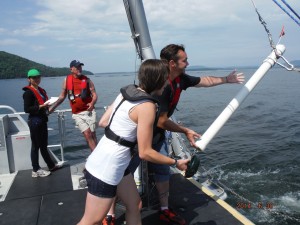 And what a lake it is! The sixth largest lake in the U.S. in terms of surface area (after only the officially-designated Great Lakes), Lake Champlain offers a complex story of water flow, sediment development, and ecological history, none of which have been completely unraveled.
And what a lake it is! The sixth largest lake in the U.S. in terms of surface area (after only the officially-designated Great Lakes), Lake Champlain offers a complex story of water flow, sediment development, and ecological history, none of which have been completely unraveled.
In addition, the lake has a relationship with the cultural narratives of this region, not the least of which is that the lake receives run-off from several rivers and streams that flow through settled portions of Vermont, New York, and Quebec, carrying into the lake a diverse mix of elements, molecules, and microbes that derive from human action — such as phosphates and nitrites from fertilizers, mercury from fossil fuel combustion, and E. coli from sewage — that potentially have harmful effects on heath and ecosystem function.
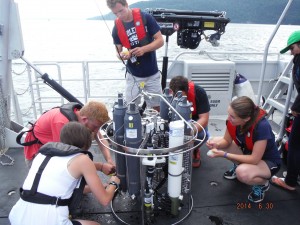 How we come to understand this mix, which society is apt to call “pollution,” requires consideration of factors, including sources, transport, quantity, effects, and standards. And we are just beginning to unpackage these through various means, including direct sampling of water and sediment in Lake Champlain aboard the R/V Folger, Middlebury College’s research vessel.
How we come to understand this mix, which society is apt to call “pollution,” requires consideration of factors, including sources, transport, quantity, effects, and standards. And we are just beginning to unpackage these through various means, including direct sampling of water and sediment in Lake Champlain aboard the R/V Folger, Middlebury College’s research vessel.
Yes, data on currents and phosphorus (in particular, unfiltered total reactive phosphorus), were collected. Consideration of the story these data tell will take place in class throughout the semester. But on this one particular afternoon, fun was had by all!
